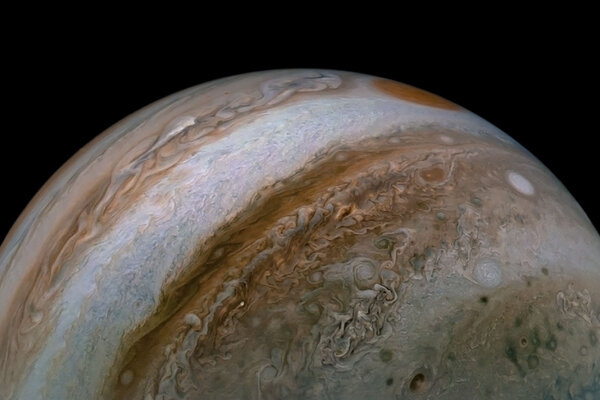The New York Times has offered this calendar to readers since 2017. It is a collection of newsworthy events in spaceflight and astronomy curated by the paper’s journalists.
The entries below these instruction will be updated regularly to adjust dates and revise information in the calendar’s entries. New events will be added and entries will be removed after they conclude or are indefinitely postponed.
The easiest way to use this calendar is to bookmark this page on your web browser and revisit it regularly.
A second option is to subscribe to the interactive feed that adds the events to your personal digital calendar. Google users can click on this link to subscribe. Apple iCloud and Outlook users may need to copy this URL and paste it into your digital calendar’s “add calendar” field to subscribe.
We won’t save any of your private information if you add this calendar to your device.
Additional instructions and answers to common questions are included below.
Answers to common questions we’ve received
How do I unsubscribe?
Google Calendar: Unsubscribe using a desktop computer
iCloud: Delete the calendar from iCloud.com
iPhone/iPad: Open “Settings,” then “Accounts,” and remove the Space Calendar subscription. If you do not see any entry for Space Calendar, follow the directions for Google Calendar or iCloud.
Does The Times save any of your private calendar information?
No. While you may receive messages to the contrary when subscribing to the calendar on your preferred app, there is only a one-time call to your calendar to add the feed. Nothing is saved on our end.
Does the calendar work with Android devices?
Yes. Use the sign-up at the top of this page to subscribe using your Google account. The calendar will be synced to your phone.
Is there a WebCal/iCal feed I can use to subscribe directly?
Copy and paste this WebCal URL (do not click on it directly) into your preferred digital calendar:
https://calendar.google.com/calendar/ical/nytimes.com_89ai4ijpb733gt28rg21d2c2ek%40group.calendar.google.com/public/basic.ics
I clicked on the link and it took me to Google Calendar but I’d rather use Apple iCal or Outlook. What do I do?
Copy this URL and go to your calendar app. Find the option to add a subscription calendar in the settings of your app. Instructions here for Outlook and here for Apple.
I subscribed to the calendar on my iPhone, but it isn’t showing up on my computer or tablet. How do I fix that?
You will need to add an iCloud Calendar subscription. Use the WebCal link mentioned above.
How do I submit feedback, or suggest another important space or astronomy event that I think you missed?
Email us at spacecalendar@nytimes.com.

India has launched spacecraft to the moon and Mars, but the country’s space agency has not yet sent its astronauts — known as vyomanauts — to space. Before it can send people to orbit, India needs to conduct uncrewed test flights of its Gaganyaan spacecraft, the first of which it says will occur in the fourth quarter. We will provide a more precise launch date for this mission when the Indian Space Research Organization announces one.

In the asteroid belt between Mars and Jupiter, there is an object that is mostly made of metal, perhaps the leftover core of a would-be planet, called Psyche. A NASA mission of the same name aims to study it up close. A scheduled launch in 2022 was postponed because the spacecraft’s software was late. The mission will launch from a SpaceX Falcon Heavy rocket at Kennedy Space Center in Florida, and it will enter orbit around the asteroid in 2029, three years later than originally planned.

Some of the United States will be visited by what is sometimes called a “ring of fire” eclipse because the moon is too far from Earth to fully block the sun, creating a ring-like effect when it reaches totality. The eclipse’s path runs through parts of Oregon, California, Nevada, Utah, Arizona, New Mexico and Texas before dipping into Central and South America. Where the weather cooperates, it should be a great solar show and a nice lead up for the total eclipse on Apr. 8, 2024, which will cross the United States from Southwest to Northeast.

Active from Sept. 26 to Nov. 22. Peak night: Oct. 20 to 21
After hitting the outbound trail of Halley’s comet in May, Earth every October runs into the debris the comet leaves as it heads toward the sun, producing the Orionid meteor shower. It is a medium-strength shower, usually producing 10 to 20 streaks per hour, although in exceptional years it can create up to 70 per hour.
The moon will be around a third full this year but will set around midnight, leaving the sky clear of its influence. The shower will be viewable all over the world between midnight and 4 a.m. local time.

NASA has relied on private companies to create new capabilities for the government agency, such as building spacecraft to carry astronauts and cargo to orbit. It is now trying a similar approach for transporting scientific instruments to the moon. A Houston company, Intuitive Machines, may launch its IM-1 mission, using its Nova-C spacecraft to carry payloads to the lunar South Pole region, potentially making it the second spacecraft to land there. Intuitive Machines, flying on a SpaceX rocket, says it will launch as soon as Nov. 15.

Active from Nov. 3 to Dec. 2. Peak night: Nov. 17 to 18
The Leonids are famous for occasionally producing meteor storms. In 1966, 1999 and 2001, the shower’s rates exceeded 1,000 fireballs per hour. This year’s show should be a more placid 15 meteors per hour or so, as the Earth hits debris fields released from its parent body, comet 55P/Tempel-Tuttle. The moon will be around a quarter full on the night of peak activity. The shower will be best viewed in the Northern Hemisphere after midnight, and later at night for those in the Southern Hemisphere.

China is getting into the orbital space telescope business. Like a more sophisticated version of the Hubble Space Telescope, Xuntian will survey the universe at optical and ultraviolet wavelengths from an orbit around Earth close to the country’s Tiangong space station. We will provide a more precise launch date for this mission when the China National Space Administration announces it.

The Andromedids are a historical shower previously thought to be defunct. Accounts by astronomers in China from 1872 and 1885 describe incredible meteor displays in which “stars fell like rain.” But the event had not produced much until 2011, when around 50 meteors per hour could be seen. It also produced a short and quite strong return in 2021.
Originating from comet 3D/Biela, the Andromedids are expected to flare once again this year, although nobody knows how strong they may be. If they appear, the meteors will be visible in Asia in the late evening just before midnight. The rising three-quarters-full moon is likely to hamper visibility after that.

Active from Dec. 4 to 17. Peak night: Dec. 13 to 14
Often one of the best and most reliable showers of the year, the Geminids will occur during a new moon this year, providing ideal conditions as long as the weather cooperates.
Viewers in northern latitudes should be able to start seeing the shower in the evening after sunset, while the action begins for those in the Southern Hemisphere after midnight. Rates could be as high as 150 meteors per hour.

It’s the scientific start to winter in the Northern Hemisphere, when this half of the world tilts away from the sun. Read more about the solstice.

Active from Dec. 17 to 26. Peak night: Dec. 22 to 23
Coming shortly after the Geminids, the Ursids are an often-overlooked minor shower that gets its name because they seem to spring from the Little Dipper, which is part of Ursa Minor.
The Ursid meteor shower will peak shortly after the new moon, meaning they will only be somewhat affected by its light. Viewers can expect to see seven to 10 meteors per hour, although it is strictly a Northern Hemisphere affair.

You wouldn’t want to live on Io, the rambunctious volcanic moon of Jupiter. But you might want to get a good look at its eruptions (from a safe distance). So would the scientists working on NASA’s Juno mission. After years of studying the atmosphere and interior of Jupiter, the spacecraft has conducted close flybys of two less perilous moons, Ganymede and Europa. The first close flyby of Io will bring Juno within 1,000 miles of the satellite world and its outbursts.

On any given night, far from bright city lights, there’s a chance that you’ll see a beautiful streak shoot across the sky as a meteor flies overhead. But on special dates scattered throughout the year, skywatchers can catch a multitude of flares as meteor showers burst in the darkness.
Meteor showers occur when our planet runs into the debris fields left behind by icy comets or rocky asteroids going around the sun. These small particles burn up in the atmosphere, leading to blazing trails of light. The regularity of orbital mechanics means that any given meteor shower happens at roughly the same time each year, with the changing phases of the bright moon being the main variable affecting their visibility.
The coming year should be a good one for meteor lovers. The biggest events — the summer Perseids and the winter Geminids — will peak when the moon is either waning or new, meaning its bright light won’t interfere much with the spectacular displays.
Those outside the United States may catch a glimpse of the Andromedids, a shower that astronomers had considered dead until it showed some activity in 2011 and is expected to potentially return again this year.
Subscribe to the Times Space and Astronomy Calendar to get a reminder ahead of these events.
How to see a shower
The best practice is to head out to the countryside and get as far from artificial light sources as possible. People in rural areas may have the luxury of just stepping outside. But city-dwellers have options, too.
Many cities have an astronomical society that maintains a dedicated dark sky area. “I would suggest contacting them and finding out where they have their location,” Robert Lunsford, the secretary general of the International Meteor Organization, said in an interview with The New York Times in 2022.
Meteor showers are usually best viewed when the sky is darkest, after midnight but before sunrise. To see as many meteors as possible, wait 30 to 45 minutes after you get to your viewing location. That will allow your eyes to adjust to the dark. Then lie back and take in a large swath of the night sky. Clear nights, higher altitudes and times when the moon is slim or absent are best. Mr. Lunsford suggested a good rule of thumb: “The more stars you can see, the more meteors you can see.”
Binoculars or telescopes aren’t necessary for meteor showers, and in fact will limit your view.
How meteor showers form
Each shower peaks on a certain date when Earth is plowing into the densest portion of the debris field, though in some cases many meteors can still be seen before or after that specific night.
A shower is named for a constellation in the part of the sky it appears to streak from. But there’s no need to be perfectly versed in every detail of the celestial sphere. Meteors should be visible all over the sky during any given shower.











